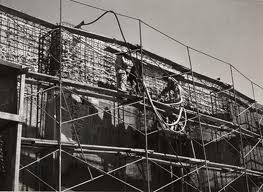I finally made some time this past week to (very slightly) catch up on some reading (being under the weather and somewhat captive to the couch helped, too) and stumbled upon two articles from different magazines that inspired me enough to rise and return to life.
As a longtime David Bowie fan (he’s in my top five list), I couldn’t wait to read “The Rise and Fall of Ziggy Stardust: How David Bowie Changed the World” in the February 2, 2012, issue of Rolling Stone magazine. This article, by Mikal Gilmore, chronicles Bowie’s rise from unknown pop singer to androgynous glam-rock god and beyond. It’s an interesting, if somewhat meandering, look at how Bowie created various personas to distance himself from the mental illnesses that ran in his family, or so the author claims.
David Bowie is clearly an accomplished musician and songwriter as well as a complex person who has been dubbed a “chameleon” many, many times. As I was reading the piece, however, I couldn’t help seeing Bowie as an inspiring master of reinvention. Of new chapters. Of soaking up everything he learned from people he met to create a new and improved David. A very changed David, in many cases.
And who of us hasn’t either done that, or dreamed of doing that? Perhaps not on as big a scale as David Bowie, but big enough for our stories to be changed in some way.
Still musing about the Bowie article, I picked up another magazine from the ever-growing pile; this time, the February, 2012, issue of O: The Oprah Magazine (hey, I like this magazine!). After flipping through the pages and catching up with my favorite columnists, I came across a feature titled “You…in six words.” This feature spread was a collection of six-word personal stories, inspired by the “Six-Word Memior ®” contest held in 2006 by SMITH Magazine, which has kept collecting the memoirs on its website for over five years.
Some of my favorites from the O spread:
Surfing life’s ripples, wishing for waves. – Karen Barbier, 49
Might as well eat that cookie. – Paula Deen, TV chef, 63 (wonder if she regrets that one since her public admission that she has type II diabetes…?)
Old too soon. Smart too late. – Ibis Kramer, 75
Loving heart for sale. Like new. – Ariel Faulkner, 25
As I laid there with visions of Ziggy Stardust, Alladin Sane, and the Thin White Duke swirling around in my head and thinking about what six words I would use to tell my story, I thought that many of us, like David Bowie, probably needed more than six words to tell our stories as they changed and shifted. I mean, if I wrote a 6-word memoir back when I was 18, would it still hold up today? Likely not, but it would still be valid. Surely, people like David and I had a right to at least 12 or even 18 words, given how many things we’ve done and changes we’ve made? (Hey! Another connection – one of my favorite Bowie songs, “Changes,” from 1971’s Hunky Dory album – the anthem to reinvention)
And so, I think there should be a new rule: anyone who has written a number of life chapters and gone through a lot of ch ch ch changes can write more than one six-word memoir to tell their story. I myself would want to use about five sets of six words (for a total of 30 if you’re keeping score) to describe each chapter. The latest? “Got off the ladder. Creativity abounds!”
Oh right; almost forgot the post’s punchline. If you’re in business, your company is probably reinventing itself on a regular basis (and if you’re not, you risk falling by the wayside, but that’s a topic for another article). Be sure that your marketing plans include updating your image and your customers on the new and improved you – hire Lockstock to help!

